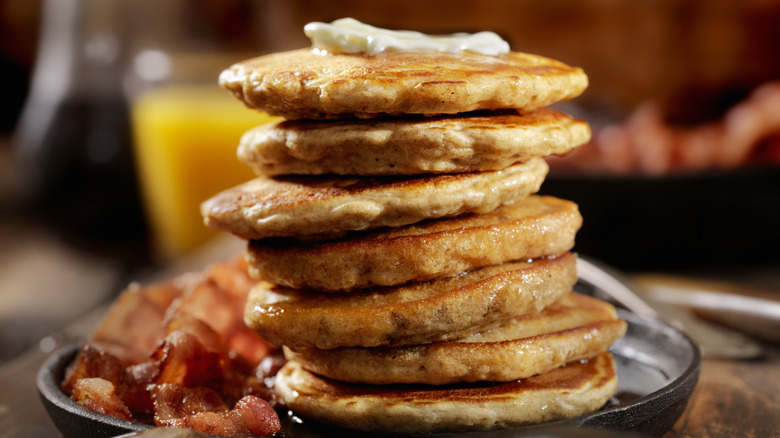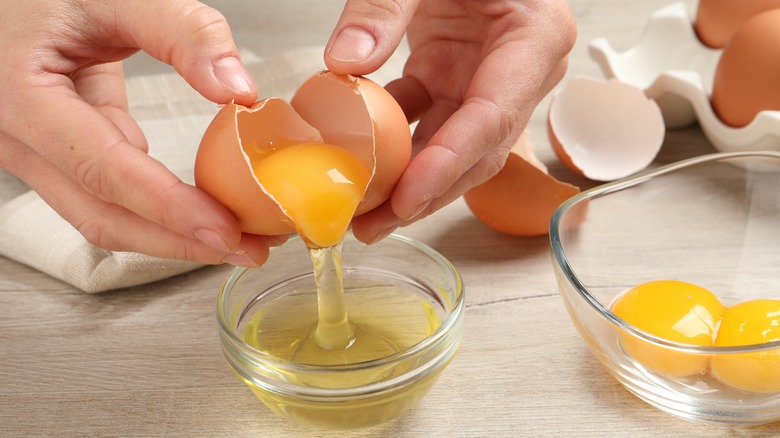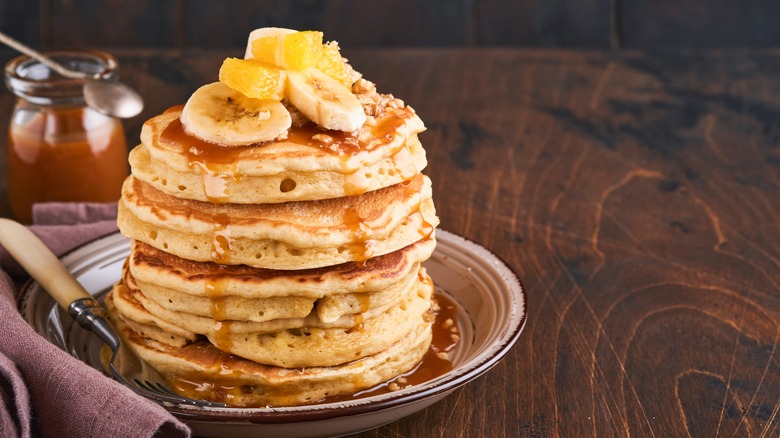Flannel Cakes Are The Fluffier Version Of Pancakes You Need To Try
It's hard to beat a batch of pancakes in the morning. While as traditional as sweet breakfasts come, there are loads of variations to choose from. Whether it's a nutty malted flapjack or an extra fluffy soufflé pancake, a few simple tweaks can totally change the dish. For an easy but distinct spin-off, try Flannel cakes.
Crafted with egg whites separately, these smaller flapjacks have a fluffy, airy texture that's perfect to soak in syrup. Plus, they require even fewer ingredients, meaning the delightful texture won't need more work. Hailing from the Appalachian region of the U.S., the term flannel cakes has been used since at least 1847. Its roots are likely in German heritage, specifically from those who lived in Western Pennsylvania. While original recipes included cakes made with deviations like oats, the classic egg white version appeared in print in 1938. Unsurprisingly, it hasn't gone away since.
How are flannel cakes made?
First, flannel cake preparation starts with their distinguishing quality: separating the eggs. While this step takes some extra effort, it's worthwhile for the pancake's unique fluffy texture. Next, the assembly resembles a classic pancake recipe, with wet and dry ingredients mixed separately and then combined. The yolks are beaten with milk, while the flour, baking powder, and salt are sifted together. The wet component is poured into the dry, and melted butter is poured in.
Meanwhile, the egg whites are beaten until soft peaks form — basically forming a meringue without sugar. While it's doable manually, an electric mixer eases the process. Then, carefully fold the egg whites into the batter, taking care not to alter the whipped consistency any further. Unlike plate-sized pancakes, flannel cakes are smaller, about a quarter cup per serving. They're not too thick but are round and scrumptiously fluffy, making them the perfect vessel for a dollop of maple syrup and an extra slice of butter.
Flannel cake variations and distinction from pancakes
Flannel cake assembly is nearly the same as regular pancakes in all preparations. The main distinction is some recipes call for shortening, a throwback to the recipe's centuries-old origins. Otherwise, flannel cakes can be personalized through their toppings. Fresh fruit, maple syrup, butter, and jam are all classic ways to garnish the cakes. However, especially in the early 20th century, they were also consumed alongside savory foods, paired with bites like sausage and chicken.
The cake's inclusion of egg whites leads to a fluffy consistency which differentiates it from other pancakes, making the cakes much lighter for a breakfast or brunch spread. Plus, most recipes forgo sugar, which is introduced in some pancake batters. Nevertheless, some consider the dish a variation of the pancake. And in print, the name flannel cake has referred to an assortment of pancake-like dishes since the mid-19th century.


